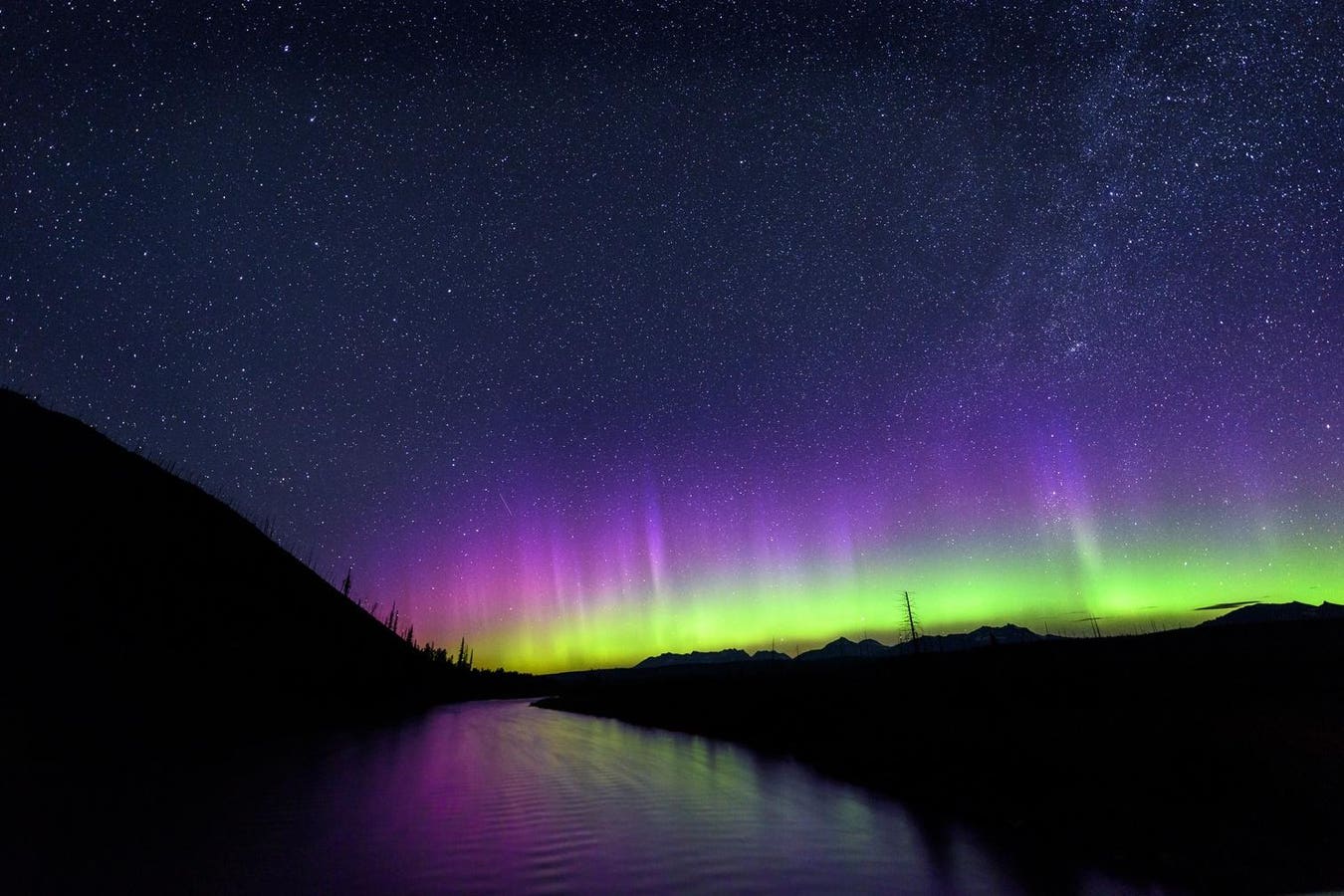Northern Lights over the North Flathead River, Glacier National Park, Montana
Would you go to Montana to go stargazing? If you want to see the stars or the Northern Lights, drive to where others are not. That way lies darkness. Such is the case in eastern Montana, where millions of acres of public land and one of the lowest population densities in the U.S. mean some of its darkest night skies — and a booming reputation for astrotourism.
That’s hinted at by one of its nicknames — “Big Sky Country” — but with two designated International Dark Sky Sanctuaries and a less formal Trail to the Stars program of 45 dark sky destinations, eastern Montana is increasingly making the best of its unpolluted, wide-open skies.
Gateway To The Stars
Near Helena in central Montana, and serving as a gateway to the remote, eastern part of the state, is the lakeside Montana Learning Center. It’s home to Montana’s largest public-access observatory, which hosts a huge 25-inch aperture Dobsonian, the largest publicly accessible telescope in the state, among others.
“Montana is home to some of the darkest skies in the lower 48, and this year’s astronomical events offer an unparalleled view of the night sky,” said Ryan Hannahoe, executive director of the Montana Learning Center, in an email. “With celestial wonders like northern lights, planetary alignments, and deep-space objects more visible than ever, it’s a fantastic time for both seasoned astronomers and curious stargazers to look up and explore the cosmos.”
The Montana Learning Center also hosts expert-led camps and classes dedicated to the night sky.
A scenic view of a desert landscape under the Milky way in Montana
Stargazing Sanctuaries
All you need to go stargazing is a dark sky — something you can find using any light pollution map — but parks that protect their night skies are hard to resist. In Montana, there are two International Dark Sky Sanctuaries — the vast landscapes of Glacier National Park in the north and the surreal sandstone formations of Medicine Rocks State Park in the far east. The “sanctuaries” designation is rare. International Dark Sky Parks are common in the U.S., but sanctuaries are rare. Non-profit DarkSky defines them as “the most remote (and often darkest) places in the world, whose conservation state is most fragile.”
Glacier National Park is the only protected dark sky to span an international border, reaching into Canada’s Waterton-Glacier International Peace Park.
Trail To The Stars
Selling yourself as a dark place ripe for astrotourism is easy, but coming up with a network of vetted places people can go where dark skies are guaranteed is much harder. However, Montana has done just that, creating a “Trail To The Stars” program that identifies 45 locations ideal for stargazing, ranging from ranches and cabins to simple campgrounds and country parks. That website is also a one-stop shop for astro-tourism events happening around Montana.
Many of the events are held in Glacier National Park, which offers astronomy programs and Logan Pass Star Parties (on July 25 and August 22, 2025), as well as its Dusty Star Observatory Sky Cam that provides a real-time view of the sky. Meanwhile, Medicine Rocks State Park offers a regular “Dinosaurs and Dark Skies” program of stargazing and fossil phosphorescence.
Wishing you clear skies and wide eyes.









